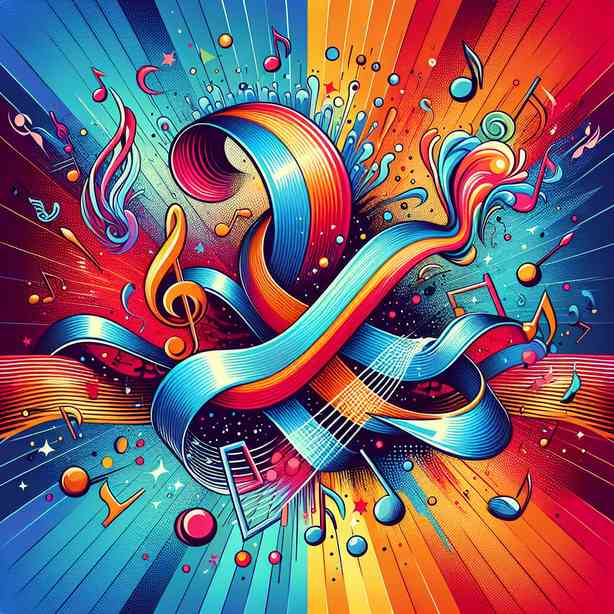
Dissonance in pop music might initially seem like a negative aspect, an awkward tension that could detract from the listener’s experience. However, upon closer examination, it reveals itself as a powerful tool that can create depth, evoke emotion, and engage audiences in unexpected ways. This complex relationship between dissonance and pop music’s structure can be understood through various elements including harmony, melody, rhythm, and cultural context.
At its core, dissonance refers to the clash of notes that create tension and instability. In pop music, which typically thrives on catchy hooks and consonant harmonies, the inclusion of dissonant elements can add layers of complexity to a song. For instance, consider the ways in which artists experiment with unconventional chord progressions or unexpected key changes. These approaches can provoke strong reactions from listeners, not merely in the moment, but on a deeper emotional level.
Dissonance can serve as a poignant reflection of the themes often explored in pop music—heartbreak, longing, insecurity, and societal issues. When artists incorporate dissonance, they may be mirroring the chaos and struggles that come with these experiences. Take for example a love song that utilizes dissonant chords to communicate the conflicting emotions of joy and sadness. This juxtaposition can help listeners feel more connected to the song, as it captures the complexities of human emotions in a way that simple, consonant melodies might overlook.
Moreover, the use of dissonance can also challenge listeners and encourage them to engage with the music more actively. When faced with dissonant sounds, listeners might instinctively seek resolution or harmony, which can lead them to invest more thought into the song’s structure and message. This active engagement can transform a passive listening experience into one that fosters contemplation and appreciation for the artistry involved.
Throughout the history of pop music, many influential artists have embraced dissonance as a fundamental part of their creative expression. For example, the late David Bowie often experimented with dissonant chords and unconventional melodies, helping to redefine the boundaries of pop music during his career. By incorporating dissonance, Bowie not only created singular and innovative soundscapes but tackled complex themes that resonated deeply with listeners.
Similarly, artists like Radiohead have made dissonance a hallmark of their sound. Songs like “Paranoid Android” feature jarring shifts in harmony and rhythm, which mirror the existential angst and social commentary present in their lyrics. By employing this musical strategy, they invite listeners into a deeper conversation about discomfort and disillusionment, enhancing the overall impact of their work.
In more contemporary contexts, artists such as Billie Eilish and Florence + The Machine have incorporated dissonant elements into their music, crafting unique soundscapes that captivate and intrigue. Eilish’s haunting melodies often juxtapose soft, soothing vocals with darker, dissonant instrumental elements, creating an unsettling yet compelling listening experience. This ability to straddle the line between beauty and discomfort not only distinguishes her sound but also resonates with themes of mental health and societal pressures.
Furthermore, the infusion of dissonance into pop music can set the stage for creativity and innovation within the genre. By embracing what is traditionally considered “out of tune,” artists can break away from conventional pop formulas and engage listeners in fresh, unexpected ways. This need for boundary-pushing and experimentation has driven the evolution of pop music, as artists strive to offer something new and authentic.
It’s essential to recognize the cultural implications of dissonance as well. Music is often a reflection of the society that produces it, and as our world grappled with increasing complexities, so too has the music we create. Pop artists use dissonance to voice concerns about social issues, personal struggles, and the state of the world. In doing so, they not only elevate their music but also harness its power as a tool for change. This resonance with listeners can transform pop songs into anthems of empowerment and catharsis.
In addition, the role of dissonance in live performances should not be overlooked. When artists perform in front of audiences, the raw energy and connection can amplify the dissonant moments, making them even more impactful. The tension created during live renditions can evoke powerful emotional responses from fans, creating a shared experience that transcends the mere act of listening. This live interaction allows listeners to feel the weight of dissonance, forging a deeper appreciation for the artistry involved.
As we explore the versatility of dissonance, it’s crucial to appreciate its interconnectedness with various musical genres. While pop music has traditionally embraced more consonant harmonies, the influences of genres like jazz, rock, and electronic music have led to a proliferation of dissonance in pop. This blending of styles has resulted in a more dynamic sound, reaching a broader audience and creating a richer listening experience.
In conclusion, the power of dissonance in pop music lies in its ability to evoke strong emotions, foster engagement, and challenge listeners. By stepping away from purely consonant structures, artists can create music that resonates on multiple levels, offering a reflection of the complexities of life. The interplay between tension and resolution can evoke catharsis, bringing listeners closer to the artists and the themes they explore.
The journey through the realm of dissonance opens up a world of creative possibilities, allowing artists to break free from conventional boundaries and innovate within the genre. As we continue to witness the evolution of pop music, the presence of dissonance serves as a vital element, one that invites deeper understanding, connection, and appreciation for the art form. As listeners, embracing this dissonance can enrich our musical experiences and enhance our ability to explore the depths of human emotion and expression. Through this lens, we can appreciate not just the catchy hooks, but the intricate craftsmanship that truly defines the music we love.


